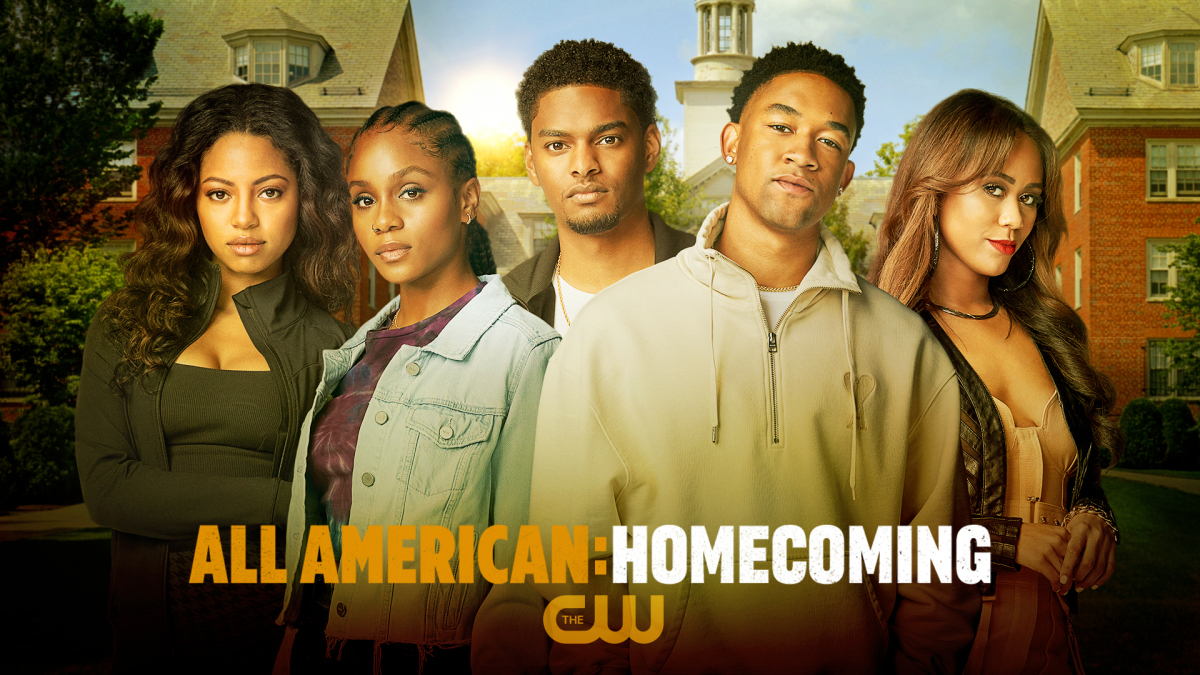Ode to an OTT OG: The CW’s Streaming Chief, Rick Haskins, Takes Us Back to Where It All Started 15 Years Ago
Sure, ‘Gossip Girl’ was a linear flop at the time, but ’I noticed boys and girls were communicating on the couch by phone even when they were sitting next to each other,’ Haskins recalls

If ever a network’s ups and downs have tracked the TV industry’s many vagaries this century, it’s the CW, which turned 15 this fall, with an online presence so old that when it debuted, YouTube had just launched, and Facebook still used a .edu internet address.
Last week, long-time executive Rick Haskins, now the CW’s president of streaming and chief branding officer, took the stage at NATPE’s Streaming+ Conference to talk about where the so-called fifth broadcast network is headed in the era of online video.

For all the changes the CW has undergone since its long-ago launch, what’s perhaps most interesting is its streaming strategy, which started almost by accident, after one of the network’s first original series stiffed.
“We started with Gossip Girl, which launched linear-only and was a complete flop,” Haskins said. But, “I noticed boys and girls communicating on the couch by phone even when they were sitting next to each other.”
That crucial insight into the changing video-consumption habits of the network’s target audience led the CW to experiment with putting Gossip Girl online.
“It was free and new, but we realized we needed to have ads,” Haskins said. “That's why we had ad-supported VOD.”
There was only one problem: “Nobody knew how to account for digital, including Nielsen,” Haskins said. “We put it back on linear, then realized we were actually hurting ourselves. We put it back on streaming, and never looked back.”
The smarter way to stay on top of the streaming and OTT industry. Sign up below.
Gossip Girl went on to run for six seasons, spawning multiple overseas spinoffs, and a relaunch this year on another WarnerMedia streaming operation, HBO Max.
The CW itself had an equally unlikely genesis, constructed out of the bones of two other failed broadcasting nets, CBS’s UPN and Warner Bros.’ s The WB. (Broadcast station group Chris Craft was in the ownership mix, too.)
Even The CW name, fashioned from the first letters of its then-parent companies, reads like something excavated from the deepest geological strata of TV’s transition from cable dominance to streaming everything.
If you’re of a more, ahem, mature demographic, in the 15 years since, it’s been easy to overlook The CW. It was available on big indie local stations such as KTLA in Los Angeles and WPIX in New York, as well as broadcasters across northern Mexico and parts of Canada.
But its series lineup never stuffed a programming grid with shows 24/7, relying on a far shorter block of original shows each season. And those shows have also been tightly focused on a younger audience, even if like audiences on the rest of legacy TV, those viewers continue to age up.
For nearly a decade, the network has been focused on viewers both male and female between 18 and 34. But, as Haskins noted, the linear audience is now considerably older, on average closer to 50, than its streaming fans, who average out at just 23.
Since that early online experiment, “We’ve tried to put as many shows up on streaming as we could,” Haskins said. The CW posted the last five episodes of each show, “and we had a Hulu relationship where you could see all of the episodes of a show,” Haskins said. “Now, we have a full stack [of episodes]. You can watch all of the CW shows from last year. Others you can watch on Netflix, until that deal goes away and they move to HBO Max.”
Unlike so many other media companies, Haskins is a fan of the audience-building power of Hollywood’s scariest competitor, and what it has meant for The CW’s licensed shows over the years.
“We love Netflix,” Haskins said. “What Netflix did was open up our shows to a much larger audience. Having it on Netflix in the summer made it much much bigger on our channel in the fall. All American and Riverdale both had that happen.

These days, the company continues to rely on a three-headed beast to reach that young audience: a continuing traditional broadcast presence, social media outlets such as Facebook and YouTube, and streaming apps for The CW and CW Seed.
“We have a really great ecosystem,” Haskins said. “We use the linear platform to drive people to our social platforms, to drive them back to linear. We purposely kept the name CW on our social accounts, our streaming accounts and on linear, so everyone knows it's the same show. It's a little bit confusing to the consumer as you bounce them around.”
The CW app features episodes of shows such as Riverdale, The Flash, DC’s Legends of Tomorrow and The 4400. It also features full seasons of shows such as Swamp Thing, Superman & Lois, Kung Fu, The Outpost, and Pandora.
CW Seed was an early experiment in AVOD, the result of long-ago exclusive deals with Hulu for its network programming.
“So we started Seed, acquired content, and started building relationships with other platforms,” Haskins said. “That really became a big video platform. If a show worked on Seed, we would put it on CW.”
CW Seed now is both a tab on The CW app and a standalone offering with 1,000 hours of on-demand programming.
The shows include complete seasons of Emmy winner Schitt’s Creek, the rebooted Beverly Hills 90210, Superman prequel Krypton, as well as older CW favorites such as Constantine: City of Demons, Everybody Hates Chris and The Game (which just relaunched with a new season on Paramount Plus). There’s even the original UK version of House of Cards (which I’d highly recommend you track down).
Perhaps more intriguing is the way the service treats short-lived older shows such as The Secret Circle and Hellcats, which only ran for 22 episodes on the network a decade ago. Now both shows have been christened as “limited series” on CW Seed, and are finding new audiences years after they were cancelled.
“The thing that's so much fun for me, Hellcats ran in (2010 and 2011),” Haskins said. “Last week, we got emails saying they love the show, and when is the next season? We really look for that kind of product on CW Seed.”
And for all the changes The CW has navigated throughout TV’s epochal last 15 years, one thing won’t be changing.
“We’re always going to be free,” Haskins said. “We gotta keep true to who we are as a brand, listening to our target audience and being true to that audience.”
David Bloom of Words & Deeds Media is a Santa Monica, Calif.-based writer, podcaster, and consultant focused on the transformative collision of technology, media and entertainment. Bloom is a senior contributor to numerous publications, and producer/host of the Bloom in Tech podcast. He has taught digital media at USC School of Cinematic Arts, and guest lectures regularly at numerous other universities. Bloom formerly worked for Variety, Deadline, Red Herring, and the Los Angeles Daily News, among other publications; was VP of corporate communications at MGM; and was associate dean and chief communications officer at the USC Marshall School of Business. Bloom graduated with honors from the University of Missouri School of Journalism.

